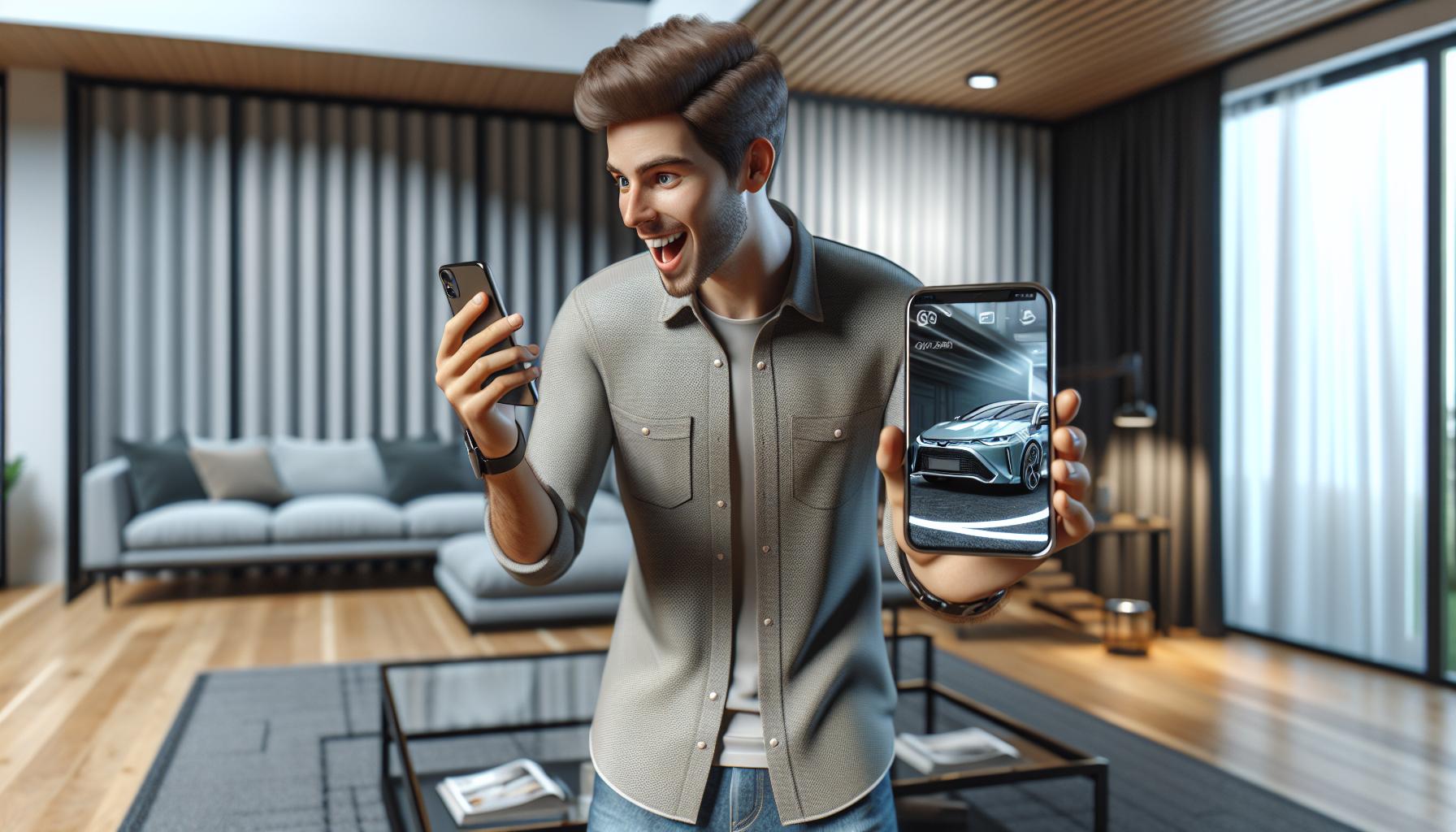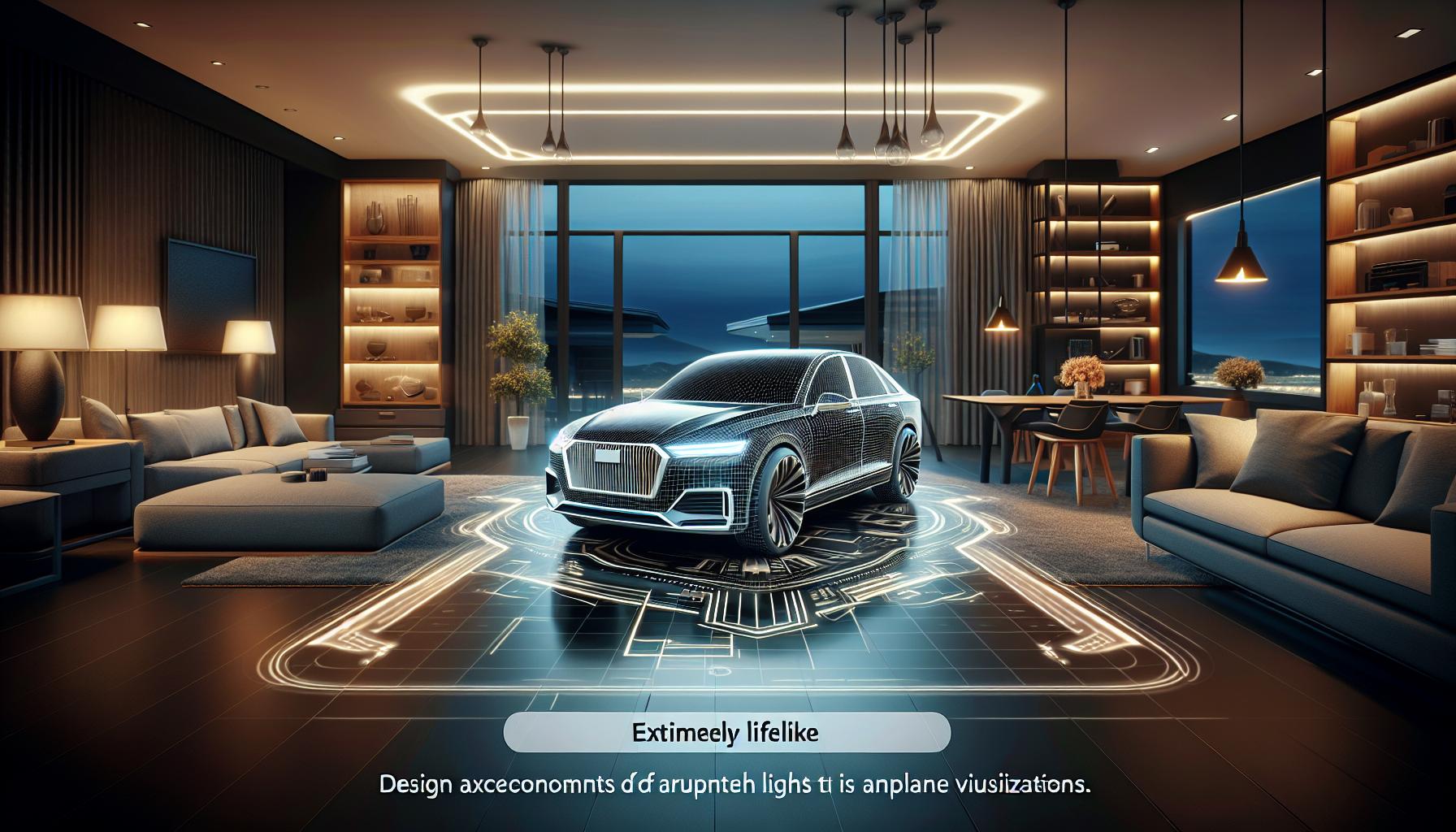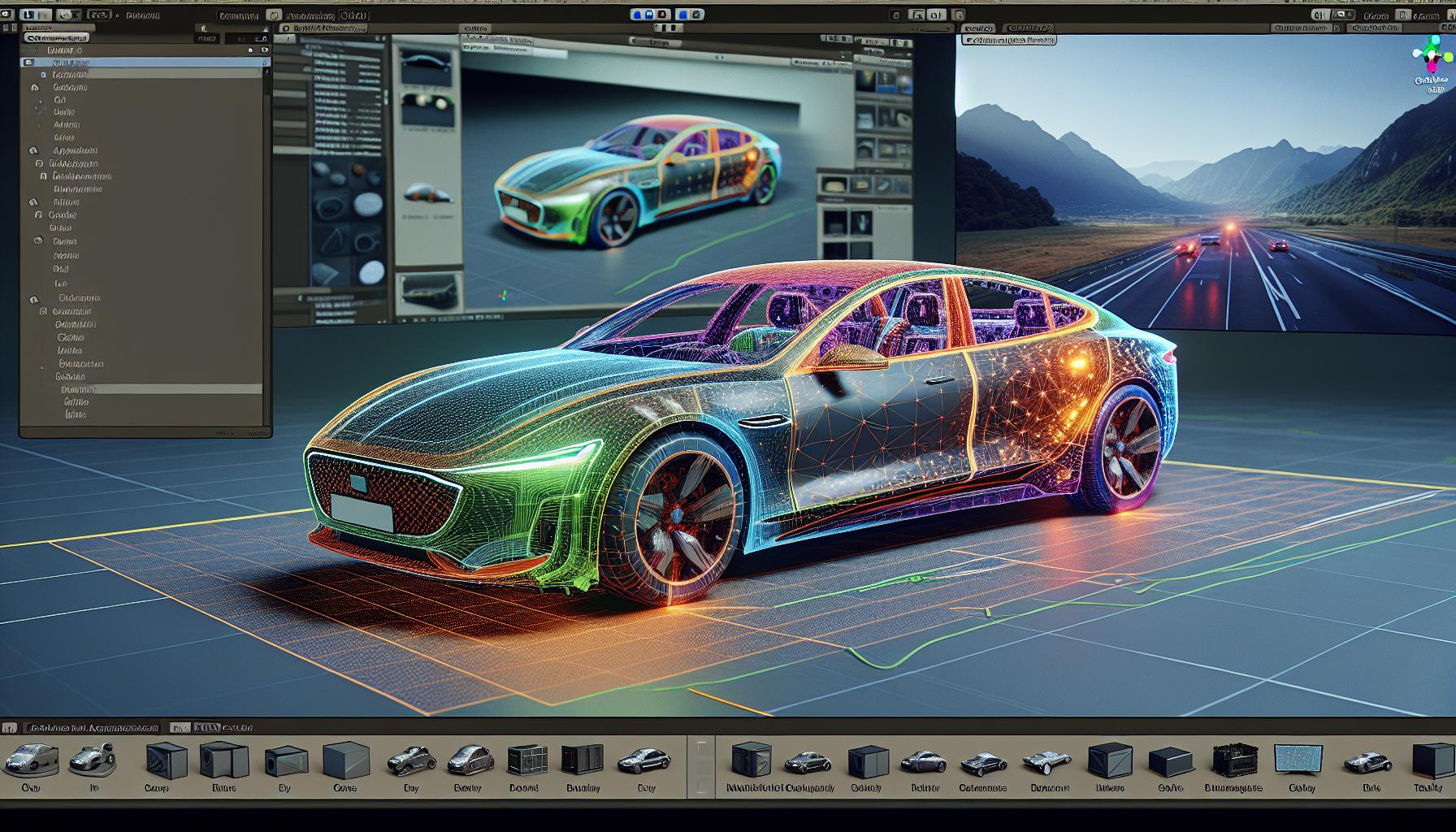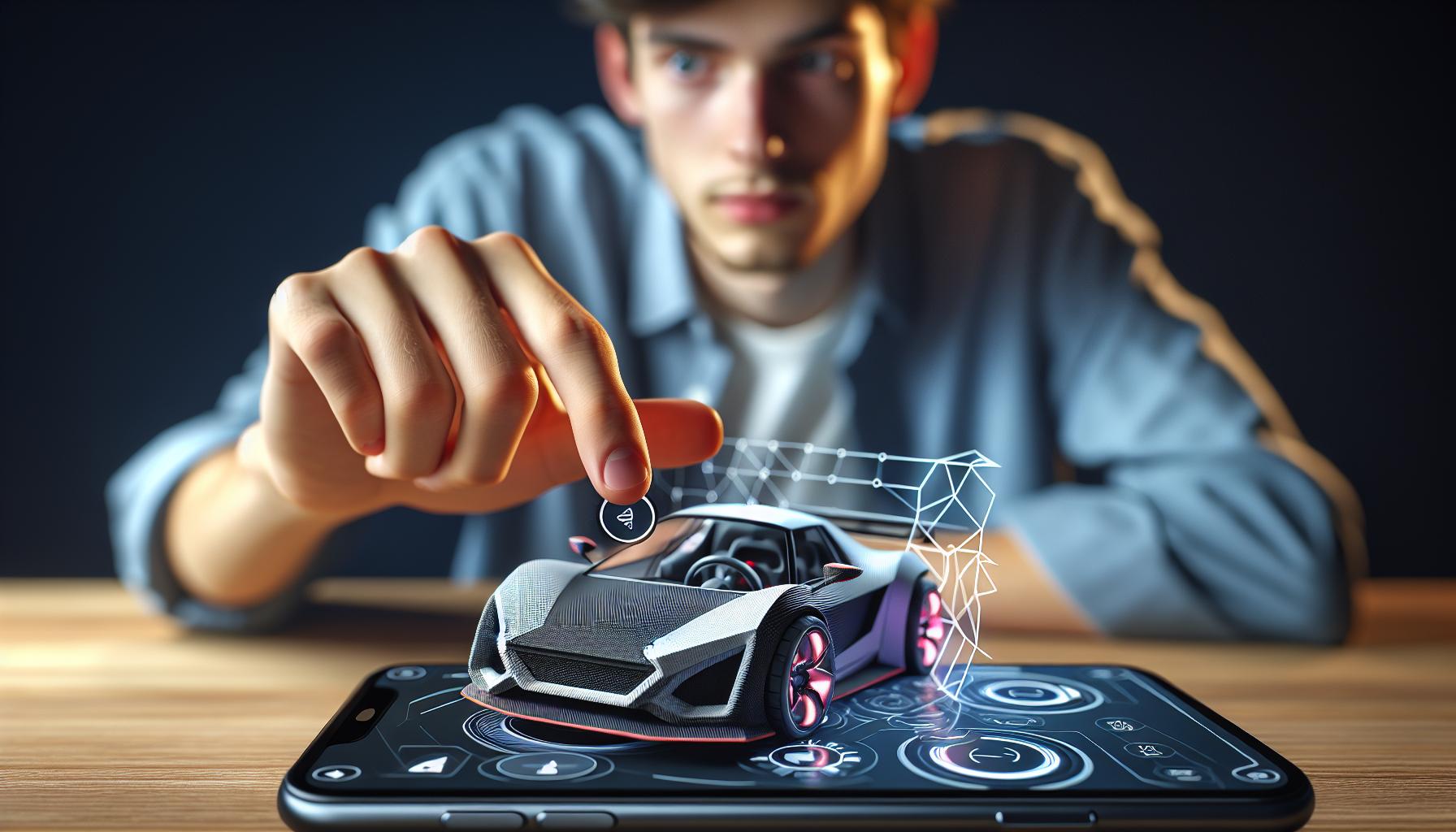
Ever dreamed of test-driving a virtual car in your living room? With ARKit and Unity, that dream’s becoming a reality. Creating an augmented reality driving experience isn’t just for tech wizards anymore – it’s a thrilling project that combines cutting-edge AR technology with the power of Unity’s game engine.
The magic happens when Apple’s ARKit meets Unity’s versatile development platform. Together, they transform ordinary spaces into virtual racetracks where custom-built cars can zoom around furniture and navigate through doorways. Whether you’re a developer looking to expand your AR portfolio or simply someone who loves mixing the real world with digital elements, building a drivable AR car delivers an exciting hands-on experience with today’s most innovative technologies.
Watch Arkit and Unity: Build a drivable car in Augmented reality videos
ARKit and Unity integration enables developers to create immersive augmented reality experiences. The setup process involves specific hardware software requirements essential tools to begin development.
Required Tools and Setup
Development of ARKit projects requires:
- Mac computer running macOS 10.15.4 or later
- Xcode 12 or newer with iOS SDK
- Unity 2020.3 LTS or higher
- iPhone or iPad with A9 processor or later running iOS 14+
- Apple Developer account (paid or free)
- ARKit Unity plugin from Unity Asset Store
- 3D modeling software (e.g., Blender Maya)
The AR-compatible iOS device needs:
| Feature | Requirement |
|---|---|
| Processor | A9 or newer |
| iOS Version | 14.0+ |
| Camera | Built-in |
| Storage | 2GB free |
Project Configuration
Unity project configuration includes:
- Create a new 3D Unity project
- Switch build platform to iOS
- Import ARKit plugin package
- Enable ARKit support in Player Settings
- Configure camera background
- Set up AR Session Origin
- Add AR Plane Manager component
- Enable tracking capabilities
| Setting | Value |
|---|---|
| Target Platform | iOS |
| Architecture | ARM64 |
| Camera Usage | Enabled |
| Location Usage | Enabled |
| Metal Graphics | Required |
Creating the AR Environment

The AR environment forms the foundation for placing and driving the virtual car in real-world spaces. This section details the essential steps to establish a functional AR scene using ARKit and Unity.
Setting Up the AR Scene
The AR scene setup begins with creating a new scene in Unity and adding the ARKit components. The ARCamera prefab replaces the default Main Camera to enable AR functionality. Additional key elements include:
- Directional Light placement for realistic shadows
- ARSessionOrigin configuration for spatial tracking
- ARPlaneManager component for surface detection
- Environmental reflection probes for realistic material rendering
- Collision layers setup for physics interactions
The scene hierarchy requires proper organization with separate parent objects for:
- AR Components
- Vehicle Assets
- Environmental Elements
- UI Components
Implementing Ground Plane Detection
Ground plane detection enables the AR system to identify flat surfaces for car placement. The ARPlaneManager component scans the environment and generates mesh planes for detected surfaces. Key implementation steps include:
- Adding ARPlane prefabs for visual feedback
- Setting up plane detection filters for horizontal surfaces
- Implementing raycasting for touch input detection
- Creating plane visualization materials
- Configuring plane boundary visualization
| Parameter | Value |
|---|---|
| Min Plane Size | 0.2m² |
| Detection Mode | Horizontal |
| Plane Prefab Scale | 1:1 |
| Update Interval | 0.1s |
Building the Drivable Car Model

Creating a realistic drivable car model in ARKit and Unity requires careful attention to both visual assets and physics components. The process involves importing high-quality 3D models and configuring proper physics behavior for authentic movement.
Importing 3D Car Assets
Unity’s Asset Store offers numerous pre-built car models optimized for AR applications. Download the selected car model package from the Asset Store through the Unity Package Manager window. Place the imported car model in the scene hierarchy under a dedicated “Vehicle” parent object. Configure the model’s scale to match real-world proportions using Unity’s transform tools – typical car models measure between 4-5 units in length. Set the car’s pivot point at the center of mass for accurate physics calculations. Adjust materials, textures for optimal performance in AR environments by reducing polygon count below 50,000 triangles.
Adding Physics Components
The Rigidbody component enables realistic car physics behavior in Unity. Add a Rigidbody component to the car model through the Inspector panel. Configure mass settings between 1000-2000 kg for realistic weight simulation. Set the drag value to 0.1 for appropriate air resistance. Apply wheel colliders to each wheel mesh – position them precisely at wheel locations. Configure suspension settings with spring strength at 35000 newton meters, damper at 4500 newton meters per second. Enable continuous collision detection for smooth interaction with AR surfaces. Add a box collider to the car body, sized to match the vehicle’s dimensions while excluding wheels.
Implementing Vehicle Controls

Vehicle control implementation transforms the static AR car model into an interactive driving experience. The control system combines physics-based movement with touch input detection for realistic handling.
Steering and Acceleration
The vehicle control script manages steering angles and acceleration forces through Unity’s physics system. A custom VehicleController component attaches to the car’s GameObject, processing input values to adjust wheel rotation and engine torque. The script applies differential steering forces to the front wheels based on user input, while the rear wheels receive power for forward and reverse movement. Key parameters include:
| Parameter | Value Range | Purpose |
|---|---|---|
| Max Speed | 0-50 m/s | Limits top vehicle velocity |
| Steering Angle | 0-45 degrees | Controls turn radius |
| Motor Force | 0-2000 N | Determines acceleration |
| Brake Force | 0-1000 N | Sets stopping power |
| Input Type | Screen Position | Control Function |
|---|---|---|
| Left Joystick | Bottom Left | Steering (-1 to 1) |
| Accelerate Button | Bottom Right | Forward Motion |
| Brake Button | Bottom Right | Reverse/Braking |
Testing and Optimizing AR Performance
Performance optimization ensures smooth AR car driving experiences through efficient resource management and strategic debugging. Here’s how to test and enhance the AR application’s performance.
Debug and Testing Tips
AR debugging requires specialized tools and methodologies for accurate issue identification. Unity’s AR Foundation Debugger displays real-time tracking data, plane detection status and camera feed information. The Frame Debugger reveals rendering bottlenecks by visualizing draw calls and shader operations. XCode Instruments tracks memory usage, CPU performance and battery consumption on iOS devices. Testing scenarios include:
- Verify surface detection in varied lighting conditions
- Test car physics responses on different surface types
- Monitor frame rates during intensive driving sequences
- Check touch input responsiveness across screen areas
- Track memory usage during extended play sessions
- Enable occlusion culling to render only visible objects
- Implement LOD (Level of Detail) for the car model based on distance
- Compress textures using appropriate formats for mobile devices
- Batch similar materials to reduce draw calls
- Set target frame rates to balance quality and battery life
| Performance Metric | Target Value | Impact |
|---|---|---|
| Frame Rate | 60 FPS | Smooth motion |
| Draw Calls | <100 | Battery efficiency |
| Memory Usage | <300 MB | App stability |
| Load Time | <3 seconds | User experience |
Spatial awareness
Building a drivable AR car experience with ARKit and Unity opens up incredible possibilities for interactive content creation. This combination of technologies transforms ordinary spaces into dynamic virtual playgrounds where users can experience the thrill of test-driving vehicles right from their iOS devices.
The marriage of ARKit’s spatial awareness and Unity’s powerful physics engine creates an immersive experience that feels natural and responsive. Developers now have the tools to craft engaging AR applications that push the boundaries of mobile entertainment.
As AR technology continues to evolve this project serves as a stepping stone for more advanced applications in automotive visualization gaming and interactive education. The future of AR development is bright and the possibilities are limitless.
